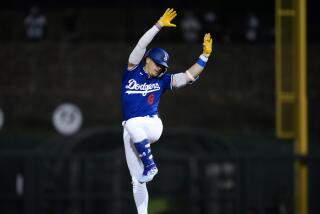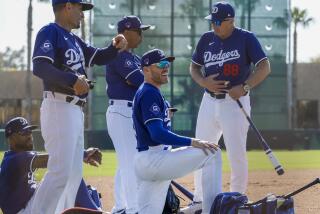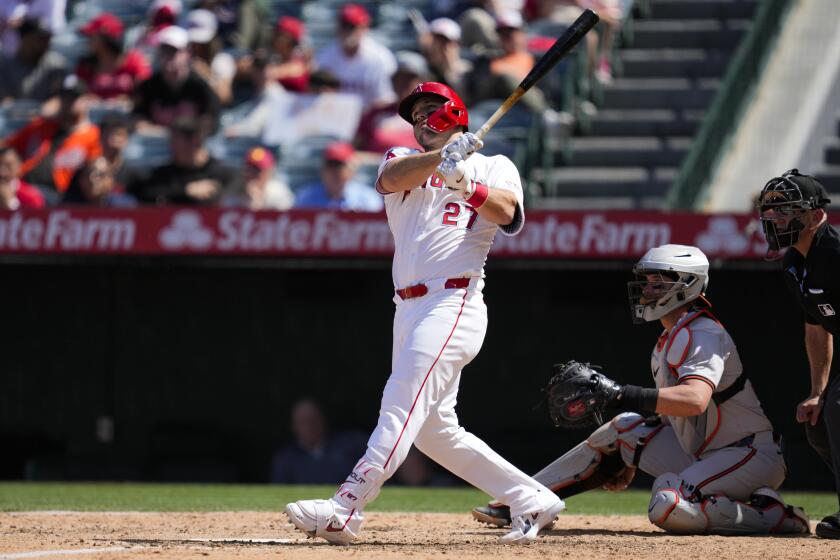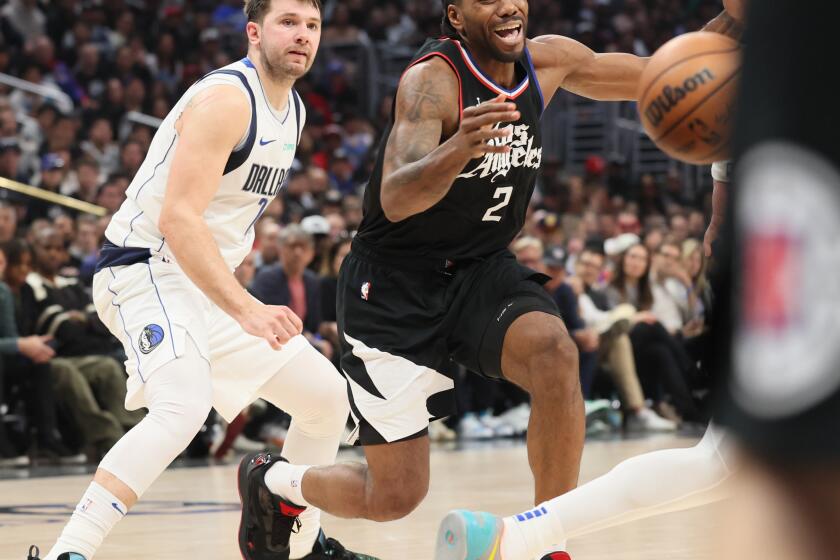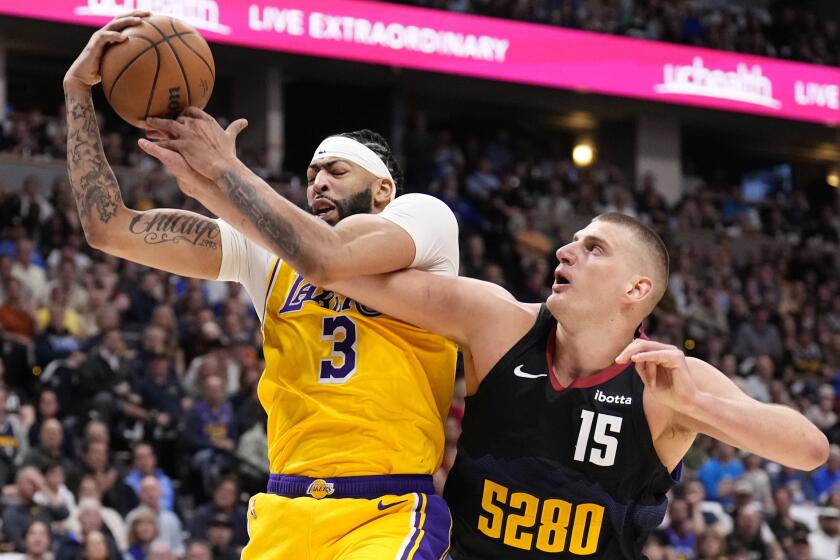For Dodgers’ Mark Ellis, two big bumps broke up grind of season
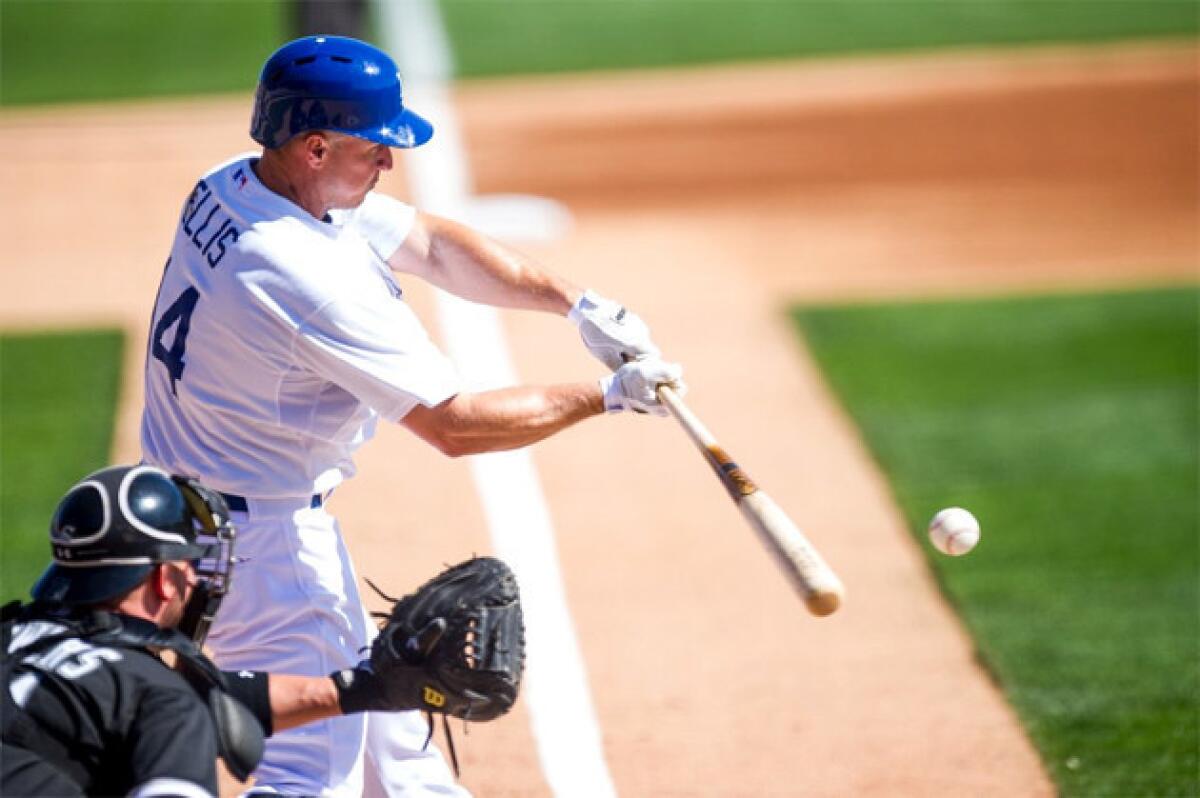
PHOENIX — We might picture Mark Ellis’ 2012 Dodgers season as a smooth road, with giant bumps at each end.
The statistics mostly reflect the smooth part.
The veteran second baseman, as reliable as your garage door opener, hit .258, with 62 runs and 31 RBIs. He also did his usual remarkable defensive job. Among players with at least 750 games at second base, he is second all-time in fielding percentage, with a .991 mark to Placido Polanco’s .993, and stayed at that level in 2012 by making only three errors in 9101/3 innings.
With Ellis, 35, in the lineup, second base is where ground balls go to die. He was so good defensively at third base at the University of Florida that they started calling the hot corner “Ellis Island.”
He played in 110 games for the Dodgers last year, third on the team.
So, where were the bumps, and how bad were they?
May 18, Dodger Stadium, seventh inning
Ellis covers second on a grounder to shortstop. As he pivots to throw for the double play, the Cardinals’ Tyler Greene, himself a second baseman, slides hard into Ellis. A replay shows Ellis’ left knee momentarily bending grotesquely at impact. Ellis crumples in pain.
In the broadcast booth, Vin Scully describes Greene’s slide as “hard, but thoroughly legitimate.”
Ellis stays in the game, even leads off the eighth inning. But the pain persists, he comes out, takes a shower, goes home and doesn’t sleep a wink.
“Way too much pain,” he says.
He reports for work the next day, but trainer Sue Falsone, the real hero here, doesn’t like the looks of the leg and sends Ellis to a hospital. During an MRI exam, he calls a halt.
“It was just throbbing,” he says. “I’d like to think I was tough enough to make it through a 45-minute MRI, but I couldn’t.”
Quickly, he was being told he would need surgery and, at that stage, was just grateful they were stopping the pain. After surgery and after his wife, Sarah, flies in from Arizona and, in her first frightened moment, lifts the sheets to see the leg, Ellis starts to get calls and texts.
Doctors tell Falsone and Manager Don Mattingly that had they waited another eight hours to operate on an injury in which compartments of blood were creating enough pressure to actually kill leg muscles, Ellis might have lost the leg.
“If this happens on a Sunday in St. Louis and I get on an airplane to come home,” Ellis says, “it is a disaster.”
Two more surgeries slowly relieve the pressure. He is in the hospital for five days. But by the Fourth of July, he is back at second base.
Ellis admits now that, upon his return, the double-play pivots weren’t his best. Mattingly says, “He was skittish.”
Soon, time heals the mind and medicine heals the leg.
Oct. 2, Dodger Stadium, seventh inning
It is Game No. 161. Giants lead, 4-3. The Dodgers can keep playoff hopes alive by winning. With one out, Ellis cracks a certain double to left-center, then does the uncharacteristic, the unthinkable. He tries to stretch it into a triple.
“I’m thinking,” he says now, “one out, one-run game.” A sacrifice fly ties it.
Ellis is out from there to the Golden State Freeway. He says he made a bad read.
“I saw the ball come off the wall,” he says, “and it dropped straight down. I figure [center fielder Angel] Pagan will have to chase it down. It won’t come off the wall to him. I thought I had time. He got to it faster than I thought he could.”
Now, with two out, Shane Victorino sends a triple into right field. Ellis could have scored on hands and knees from second. Scully, ever so gently, says it’s moments such as these, Bill Buckner moments, that make the game distinctive, memorable.
Now it is the ninth, last chance for the Dodgers. Two out, rocket man Dee Gordon on second and Ellis at the plate.
Scully, in succinct and superb summary, says, “Well, it figures.”
Ellis says now, “There was no way the guy [reliever Sergio Romo] was going to get me out. I couldn’t wait to get up there.”
Ellis battled. Romo battled. Then Ellis got enough of a pitch to get it out of the infield, but not enough to keep it from settling into an outfielder’s glove.
Ellis says that, in the aftermath, his teammates were great, as were Mattingly and even General Manager Ned Colletti. Mattingly says, although that game is long forgotten, it may also “serve as motivation for Ellis.”
Ellis agrees.
“You learn from failure,” he says. “That’s why I want my three kids to play athletics.”
The long road beacons Ellis again. The 2013 season looks smooth, but he knows those bumps are inevitable.
More to Read
Get our high school sports newsletter
Prep Rally is devoted to the SoCal high school sports experience, bringing you scores, stories and a behind-the-scenes look at what makes prep sports so popular.
You may occasionally receive promotional content from the Los Angeles Times.
